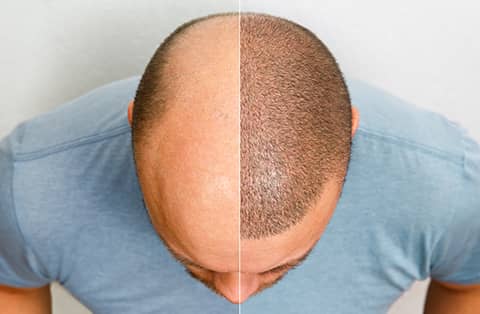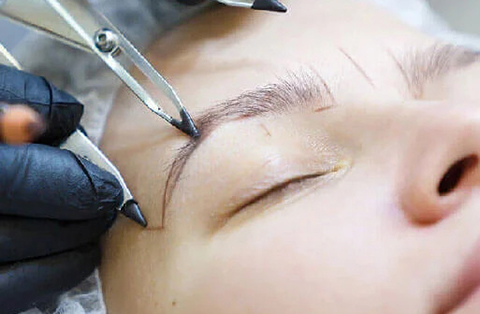Are you considering dental implants to restore your smile and oral function? Understanding the healing stages and recovery timeline is essential for a smooth and successful experience. Dental implants offer a long-lasting solution for missing teeth, but the process involves several stages that require patience and care.
In this guide, we will walk you through the entire journey, from the initial procedure to the final recovery phase. Discover what to expect at each stage, how to care for your implants, and the benefits of this transformative dental solution. Read on to learn more about achieving a healthier, more confident smile with dental implants.
What Are Dental Implants?
Dental implants are artificial tooth roots made of biocompatible materials like titanium. They are surgically inserted into the jawbone to support replacement teeth, such as crowns, bridges, or dentures. Dental implants provide a stable and permanent solution for missing teeth, closely mimicking the function and appearance of natural teeth.
Understanding the Implant Process
The dental implant process involves several steps:
Initial Consultation: A thorough examination, including X-rays and scans, to assess jawbone health and plan the procedure.
Implant Placement: The surgeon places the implant into the jawbone. This requires a minor surgical procedure, typically performed under local anesthesia.
Osseointegration: The jawbone gradually fuses with the implant over a few months, creating a strong foundation.
Abutment Placement: Once osseointegration is complete, an abutment is attached to the implant. This connector will hold the replacement tooth.
Crown Placement: Finally, a custom-made crown is attached to the abutment, completing the restoration.
Benefits of Dental Implants
Dental implants offer numerous advantages, including:
Durability: Implants are designed to last many years, often a lifetime, with proper care.
Functionality: They restore full chewing ability, allowing you to eat and speak naturally.
Aesthetic Appeal: Implants look and feel like natural teeth, enhancing your smile and confidence.
Bone Health: Implants stimulate the jawbone, preventing bone loss and preserving facial structure.
Convenience: Unlike dentures, implants do not require removal for cleaning or adhesive use.
Understanding dental implants and their benefits can help you make an informed decision about restoring your smile and oral health.
Stages of Dental Implant Healing
The healing process after dental implant surgery is crucial for the success and longevity of the implants. Understanding the different stages of healing can help you prepare for what to expect and ensure proper care throughout the journey. This guide outlines the key phases of dental implant healing, from the initial post-surgery period to the integration of bone grafts.
Initial Healing Stage
The initial healing stage begins immediately after the implant is placed. During this period:
First 24-48 Hours: Expect minor bleeding and swelling. Use gauze and cold compresses to manage these symptoms.
Pain Management: Mild to moderate pain is common. Over-the-counter pain relievers or prescribed medications can help.
Oral Hygiene: Maintain gentle oral hygiene to prevent infection. Rinse with salt water and avoid brushing the surgical site.
Soft Tissue Healing Process
Soft tissue healing involves the gums around the implant:
Week 1-2: Swelling and bruising subside. Stitches may dissolve or be removed by your dentist.
Gum Tissue Recovery: The gum tissue begins to heal and adapt around the implant, creating a tight seal.
Follow-Up Visits: Regular check-ups ensure proper healing and address any concerns.
Bone Graft Integration
In cases where bone grafting is needed, this stage is vital:
Bone Graft Procedure: Bone grafts are placed to enhance the jawbone’s volume and density, supporting the implant.
Healing Timeline: Bone grafts require several months to integrate fully with the natural bone. This process, known as osseointegration, is critical for implant stability.
Monitoring Progress: Your dentist will monitor the integration through X-rays and follow-up visits to ensure the graft is successful.
Understanding these stages helps you navigate the dental implant healing process with confidence, ensuring optimal results and a healthy, lasting smile.
Recovery Timeline After Dental Implant Surgery
Day 1-2: Immediate Post-Surgery Period
In the first couple of days following dental implant surgery, you can expect:
Swelling and Discomfort: Swelling and mild discomfort are common. Use ice packs to reduce swelling and take prescribed or over-the-counter pain relievers as directed.
Bleeding: Minor bleeding or oozing is normal. Bite on gauze pads to control it.
Diet: Stick to a soft food diet and avoid hot or spicy foods. Stay hydrated but avoid using straws.
Week 1: Initial Healing
During the first week:
Stitches: If non-dissolvable stitches were used, they might be removed during a follow-up visit.
Oral Hygiene: Maintain gentle oral hygiene. Rinse with salt water and avoid brushing the surgical site.
Activity: Avoid strenuous activities and smoking, which can impede healing.
Weeks 2-4: Continued Recovery
Over the next few weeks:
Swelling and Bruising: These symptoms should diminish significantly.
Soft Tissue Healing: The gums will start to heal and adapt around the implant.
Diet: Gradually reintroduce firmer foods, but avoid chewing directly on the implant site.
Months 1-3: Osseointegration Phase
This crucial phase involves the integration of the implant with the jawbone:
Bone Fusion: The jawbone gradually fuses with the implant, a process called osseointegration, providing a stable foundation.
Follow-Up Appointments: Regular check-ups are necessary to monitor the implant’s stability and healing progress.
Activity: Normal activities can usually be resumed, but continue to avoid heavy chewing on the implant site.
Month 4-6: Final Stages of Healing
As osseointegration completes:
Abutment Placement: The abutment, a connector for the replacement tooth, is attached to the implant.
Soft Tissue Adjustment: The gums will heal around the abutment, forming a natural seal.
Crown Placement: A custom-made crown is attached to the abutment, completing the restoration.
Long-Term Recovery
After the crown is placed:
Oral Hygiene: Maintain excellent oral hygiene to prevent infection and ensure the longevity of the implant.
Regular Check-Ups: Continue with routine dental visits to monitor the implant and overall oral health.
Healthy Habits: Avoid habits that could damage the implant, such as smoking or chewing hard objects.
Understanding this recovery timeline can help you manage expectations and care for your dental implants effectively, leading to a successful and enduring restoration of your smile.
Successful Dental Implant Recovery Tips
Ensuring a smooth recovery after dental implant surgery is crucial for the long-term success of your implants. Here are some essential tips to help you navigate the recovery process and achieve optimal results:
Follow Post-Op Instructions: Adhere to your dentist’s guidelines for care and medication.
Manage Swelling: Apply ice packs to reduce swelling during the first 48 hours.
Maintain Oral Hygiene: Keep your mouth clean with gentle brushing and saltwater rinses.
Eat Soft Foods: Stick to a soft food diet to avoid putting pressure on the implant site.
Avoid Smoking: Smoking can hinder healing and increase the risk of complications.
Attend Follow-Up Visits: Regular check-ups ensure proper healing and address any issues.
Rest and Hydrate: Get plenty of rest and stay hydrated to support your body’s healing process.
Avoid Strenuous Activities: Refrain from intense physical activities that might disturb the implant site.
Watch for Signs of Infection: Contact your dentist if you notice unusual swelling, pain, or discharge.
Use Prescribed Medications: Take antibiotics or pain relievers as prescribed to prevent infection and manage pain.
Oral Care Tips for Dental Implant Healing
Proper oral care is essential for the successful healing of dental implants. Adopting the right habits can promote faster recovery, prevent complications, and ensure the longevity of your implants. This guide provides valuable tips for maintaining optimal oral health during the healing process.
Post-Implant Placement Dental Care
Immediately after your dental implant procedure, specific care practices are vital:
Gentle Brushing: Use a soft-bristled toothbrush to gently clean your teeth without disturbing the implant site. Avoid the surgical area during the first few days.
Saltwater Rinses: Rinse your mouth with a warm saltwater solution several times a day to reduce swelling and prevent infection. Avoid commercial mouthwashes that may contain alcohol.
Avoiding Irritation: Steer clear of vigorous rinsing, spitting, or using straws, as these actions can dislodge the blood clot and delay healing.
Prescribed Mouth Rinse: If your dentist prescribes an antimicrobial mouth rinse, use it as directed to minimize the risk of infection.
Maintaining Dental Health During Healing
As you progress through the healing stages, maintaining good oral hygiene becomes even more critical:
Regular Brushing and Flossing: Continue brushing twice a day and flossing daily, but be cautious around the implant site. Special implant-specific brushes and floss can be helpful.
Hydration and Diet: Stay hydrated and maintain a balanced diet rich in vitamins and minerals to support overall health and healing. Avoid sticky, hard, or crunchy foods that could irritate the implant.
Avoiding Smoking and Alcohol: Both smoking and excessive alcohol consumption can impede the healing process and increase the risk of implant failure.
Regular Dental Visits: Schedule regular follow-up appointments with your dentist to monitor the healing progress and ensure the implant is integrating properly with the jawbone.
Monitoring for Issues: Be vigilant for signs of complications, such as persistent pain, swelling, or unusual discharge. Contact your dentist immediately if you notice any of these symptoms.
By following these oral care tips, you can support the healing process of your dental implants, ensuring a successful outcome and a healthy, lasting smile.
Frequently Asked Questions
How do I know if my dental implant is healing correctly?
To know if your dental implant is healing correctly, look for reduced swelling and discomfort within a few days. The implant site should gradually feel more stable. Regular check-ups with your dentist will confirm proper healing. Watch for persistent pain or unusual discharge, and consult your dentist if these occur.
How long does it take for a dental implant to settle in?
Dental implants typically take 3 to 6 months to fully settle. During this period, the jawbone fuses with the implant in a process called osseointegration. Healing times can vary based on individual health and the implant’s location. Regular dental check-ups will ensure proper progress.
How many days should you rest after dental implant?
You should rest for at least 2-3 days after dental implant surgery. During this time, avoid strenuous activities and allow your body to begin healing. Follow your dentist’s instructions closely. Gradually resume normal activities as you feel comfortable and ensure proper care for the implant site.
How long after dental implants can I eat normally?
You can start eating soft foods immediately after dental implant surgery. Return to your normal diet after about 1-2 weeks, but avoid chewing directly on the implant site. Follow your dentist’s guidelines to ensure proper healing. Gradually introduce harder foods as comfort allows.











